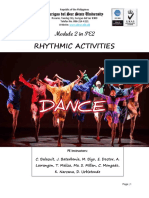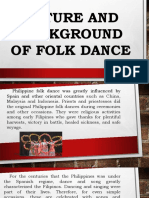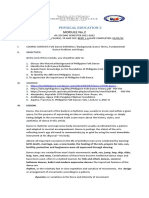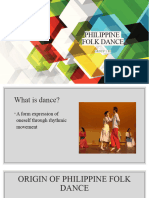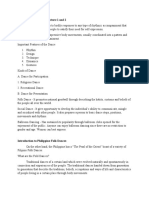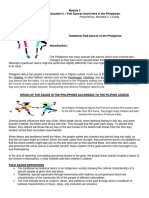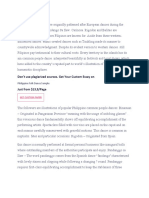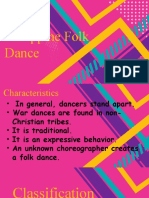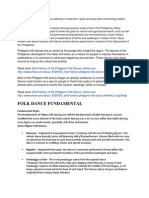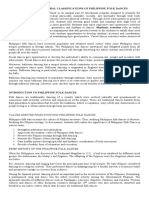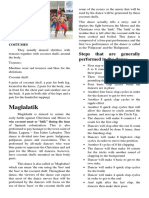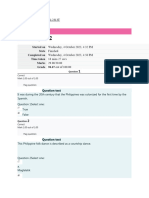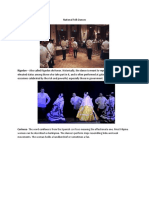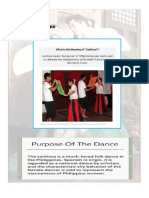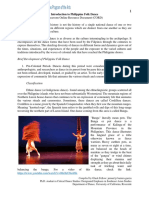0% found this document useful (0 votes)
212 views28 pagesPhilippine Folk Dance Insights
The document discusses the nature and background of Philippine folk dances. It defines folk dance and describes how they are diverse and include religious, ceremonial and other dances. It provides details on some famous folk dances in the Philippines like Maglalatik, Sayaw sa Bangko, Tinikling, Cariñosa and Pandanggo sa Ilaw.
Uploaded by
Nobleza ArdyCopyright
© © All Rights Reserved
We take content rights seriously. If you suspect this is your content, claim it here.
Available Formats
Download as PPTX, PDF, TXT or read online on Scribd
0% found this document useful (0 votes)
212 views28 pagesPhilippine Folk Dance Insights
The document discusses the nature and background of Philippine folk dances. It defines folk dance and describes how they are diverse and include religious, ceremonial and other dances. It provides details on some famous folk dances in the Philippines like Maglalatik, Sayaw sa Bangko, Tinikling, Cariñosa and Pandanggo sa Ilaw.
Uploaded by
Nobleza ArdyCopyright
© © All Rights Reserved
We take content rights seriously. If you suspect this is your content, claim it here.
Available Formats
Download as PPTX, PDF, TXT or read online on Scribd
/ 28



